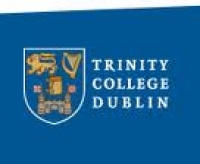About Us
Trinity College Dublin (TCD) is recognised internationally as Irelands premier university and as one of the world's leading research-intensive universities. Founded in 1592 on the general pattern of the ancient colleges at Oxford and Cambridge, it is the oldest university in Ireland and one of the older universities of Western Europe. The pursuit of excellence through research and scholarship is at the heart of a Trinity education. It provides a unique educational experience encompassing all major academic disciplines in the arts, humanities, engineering, science, human, social and health sciences. Students benefit from a scholar teacher model where they have the opportunity of being taught by world-leading experts in their field. In 2011, Trinity was ranked in the top 1% of research institutions in the world in 17 fields including Molecular Biology and Genetics, Immunology, Microbiology, Chemistry, Life Sciences, Social Sciences, Computer Science, Clinical Medicine and Engineering. It has an outstanding record of publications in high-impact journals and a track record in winning research funding which is among the best in the country. Its research strategy is committed to world-class research activities in five key areas of major interdisciplinary strength: European & International Integration Culture & Creative Arts Materials & Intelligent Systems Biosciences & Translational Research Transport, Energy & Environment Trinity College Dublins campus is situated in the centre of Irelands capital city. Its 47 acre campus of cobbled squares, historic buildings and green playing fields stand alongside state-of-the-art modern facilities such as the Science Gallery, the Douglas Hyde Gallery, the Nanoscience research centre (CRANN), the Long Room Hub Institute for Arts and Humanities, the new Biomedical Sciences Institute, and The Lir-the National Academy for Dramatic Art. Its Library is the largest research library in Ireland. It has had 200 years of legal deposit for publications in Ireland and the UK and contains 5 million volumes, a considerable breadth of electronic resources, and an extensive collection of manuscripts, the most famous being the Book of Kells.


